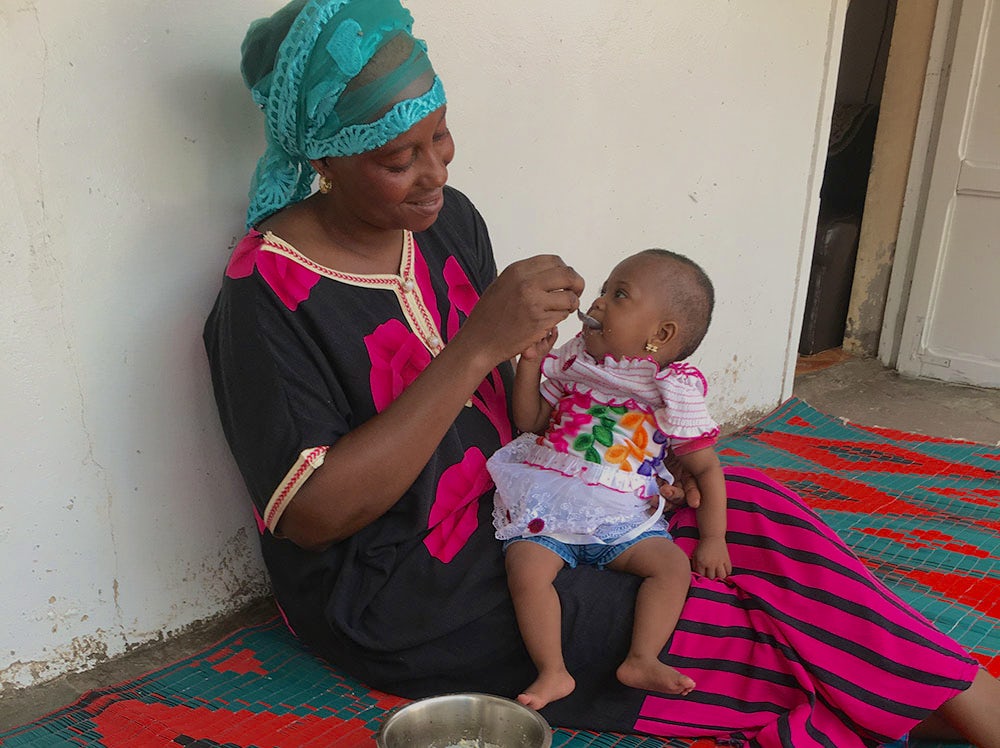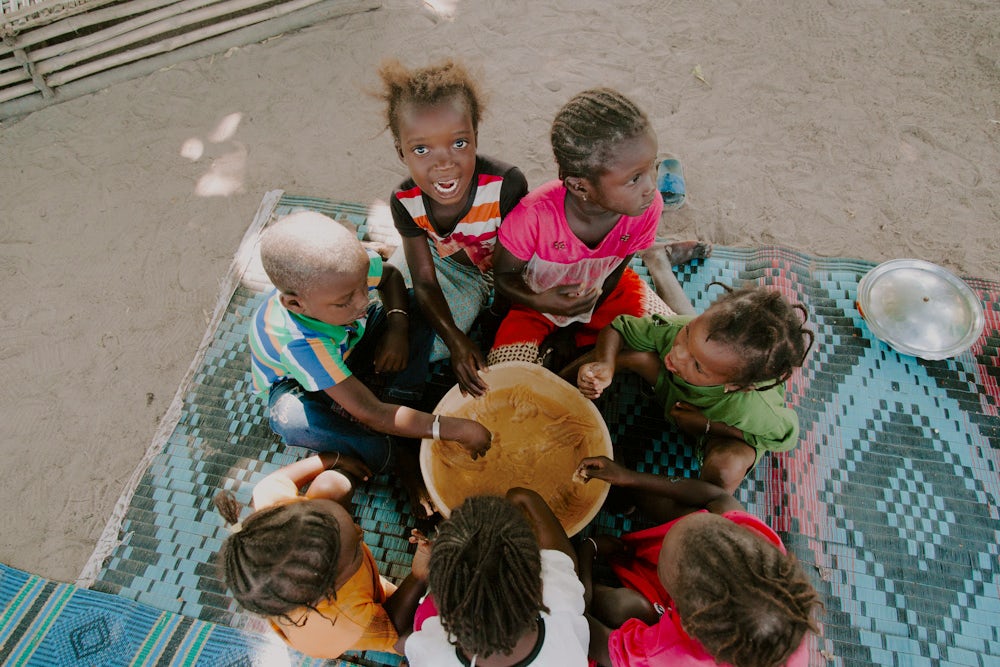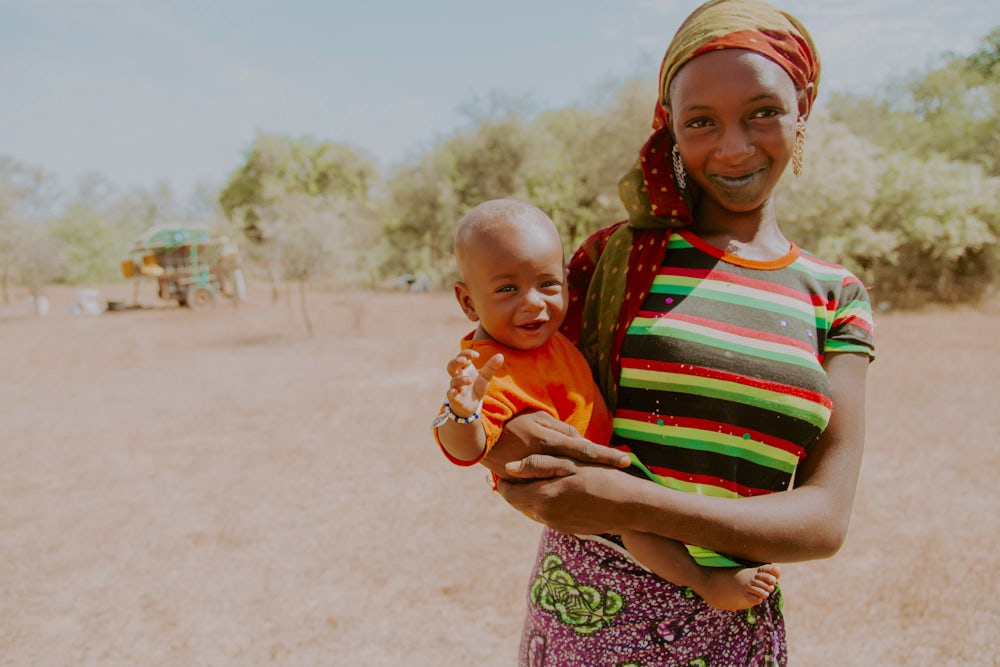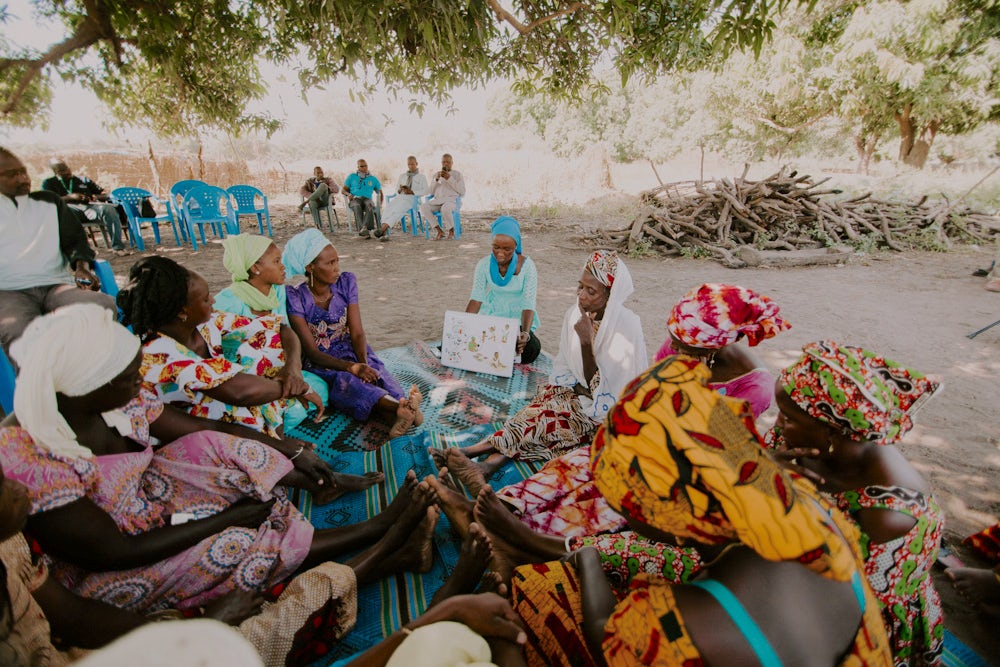When Mairam Cissé’s 9-month-old daughter, Amy, was diagnosed as severely malnourished, she was devastated.
Mairam lives with her husband, Mamadou, and her three children in a small village in Sédhiou, Senegal, where the couple cultivates millet and peanuts on a small piece of land for household consumption and income. However, the profit from the harvest is rarely enough to feed the family — and, now, it was showing in Amy.

“I thought my world was going to fall apart,” Mairam shared. “She was so weak, had no appetite. … She was crying for nothing. My husband and I had lost all hope of saving her.”
Malnutrition such as this is a global threat that can affect anyone, but young children like Amy — those in the first 1,000 days of life, when development is happening at a rapid pace — are especially vulnerable to its harsh effects. Read on to learn more about this crisis and its impacts during this critical window of opportunity in a child’s life.
As defined by the World Health Organization, malnutrition is a condition caused by deficiency, excess or imbalance of calories or nutrients in a person’s diet. Malnutrition can occur when people are unable to access the quantity or quality of food they require to survive, grow and lead a healthy life.
Poor dietary diversity, irregular eating patterns and frequent consumption of poor-quality foods also contribute to malnutrition and can manifest in vastly different ways, from extreme hunger to obesity.
Malnutrition is especially damaging in children. A deficiency of vital nutrients in a child’s diet can cause conditions such as stunting or wasting, which refer to low height for age and low weight for height, both of which are linked to impaired physical and cognitive development. Malnutrition can also lead to chronic health conditions and permanently affect a child’s quality of life. In extreme cases, it can result in shrinking of muscles, blurred vision, struggled breathing, irregular heartbeat and organ damage.
Globally, 45 million children under 5 suffer from wasting and around 149 million are affected by stunting. Every year, undernutrition claims the lives of more than 3 million children before they turn 5.
The largest window of opportunity to lay the foundation for good health and well-being is in the first 1,000 days of life, from conception to a child’s second birthday.
This is a time of extraordinary cognitive development and growth: Between just the fourth and 24th weeks of pregnancy a child’s brain grows from having an estimated 10,000 cells to a remarkable 10 billion, and the brain continues to form more than 1 million new neural connections every second during the first few years of a child’s life.

Brain growth during this period happens more quickly than any other time in development, and it’s fueled by proper nutrition at every stage.
The same possibility of this significant 1,000-day period also makes it a phase of immense risk, especially for families without access to sufficient food. Inadequate nourishment during pregnancy, infancy and toddlerhood can cause profound and often irreversible damage to children’s physical and mental growth, permanently impairing their bodily health, ability to learn and likelihood of having strong economic prospects in the future.
While malnutrition is caused by densely rooted issues including food insecurity, inadequate health care, and poor hygiene and sanitation, poverty remains the primary determinant, especially in poorer and developing countries.
Poverty deprives people of purchasing quality food and health care for themselves and their children. For smallholder farmers like Mairam and Mamadou, who rely on growing crops to earn income, poverty can also make it impossible to build farms that generate adequate profits.
“My husband's monthly income is around $18, which is very low given our need,” Mairam shared. “My biggest struggle is to ensure that my family has enough quality food because the means are not enough.”

“Most of the time, we only had two meals, mostly based on rice and sometimes millet. I admit that it is not too nutritious most of the time,” she added. “These challenges, unfortunately, affect the health of our children.”
For Mairam and millions of others who chronically cannot afford the food they need, the link between poverty and malnutrition is not linear, with a definitive start and finish. It’s cyclical — and crippling.
Malnourished children are more likely to grow up to become adults with compromised physical and mental health, limited educational and earning ability and, therefore, a higher risk of being unable to afford a nutritious diet for their own children, creating a vicious cycle of poverty and malnutrition that each fuel the other for generations.
In many rural areas, a lack of awareness on maternal and newborn care and the importance of dietary diversity compounds the effect of poverty on early childhood nutrition. Social and cultural norms, such as taboos around breastfeeding or women being expected to eat last, can also make children vulnerable to not getting the nutrients they need.
“I did not know how to breastfeed my child well,” Mairam shared, explaining how traditional but inadequate feeding practices in her Senegalese community contributed to frequent illness in her daughter. “Since my daughter was born, I had been giving her water in addition to breast milk because of the belief in the [area that] she will be dehydrated if she does not drink [water].”
Women around the world are often confronted with similar misinformation or difficulty getting the necessary support to keep their families healthy.

Because a child in its first 1,000 days acquires its first and most crucial supply of nutrition from the nutrient stores and care of the mother, the well-being and education of mothers — ensuring they have access to information on dietary diversity, breastfeeding, health services and nutritional needs of all family members, including themselves — becomes a critical link to supporting the health of children during this opportune time.
Heifer International is working with mothers and families around the world to put nutritious food on their plates, overcome generational poverty and malnutrition and, instead, pass on the wealth of good health to their children.
In Senegal, we’re helping 25,000 families, including Mairam’s, address malnutrition by improving their livelihoods and earnings and educating mothers on exclusive breastfeeding, complementary feeding after 6 months and how to monitor their children’s growth. We’re also working with the local government to expand families’ access to health centers for consultation and treatment of child malnutrition.
“The project workers took me to the health post and put me in touch with the head nurse who took really good care of my child,” Mairam shared, explaining how the nutritional advice and treatment plan she received helped her turn Amy's condition around. “Now my daughter is much better.”

Globally, we’re partnering with nearly 1 million smallholder farmers to build dignified livelihoods that earn a Sustainable Living Income, which can provide nutritious food, education, health care and other essentials for themselves and their children for the long term.
We also help farmers establish kitchen gardens where they can grow diverse produce at their homes, and provide resources so farmers can improve the productivity of their animals and provide nutrient-dense animal-sourced foods, like milk and eggs, for their families’ consumption.
This work is enhanced in many cases by nutrition training, which helps people understand the nutritional value of the foods that are available in their communities and make informed choices on what to purchase, raise or plant.
More than 425,000 people have participated in the training between 2007 and 2022, receiving practical education about food groups, maternal care and the role of nutrients in physical growth. The sessions also tackle cultural norms that contribute to hunger and malnutrition, such as unequal food distribution among family members, to ensure a safe, healthy and nurturing environment for mothers and their children — for the first 1,000 days and beyond.